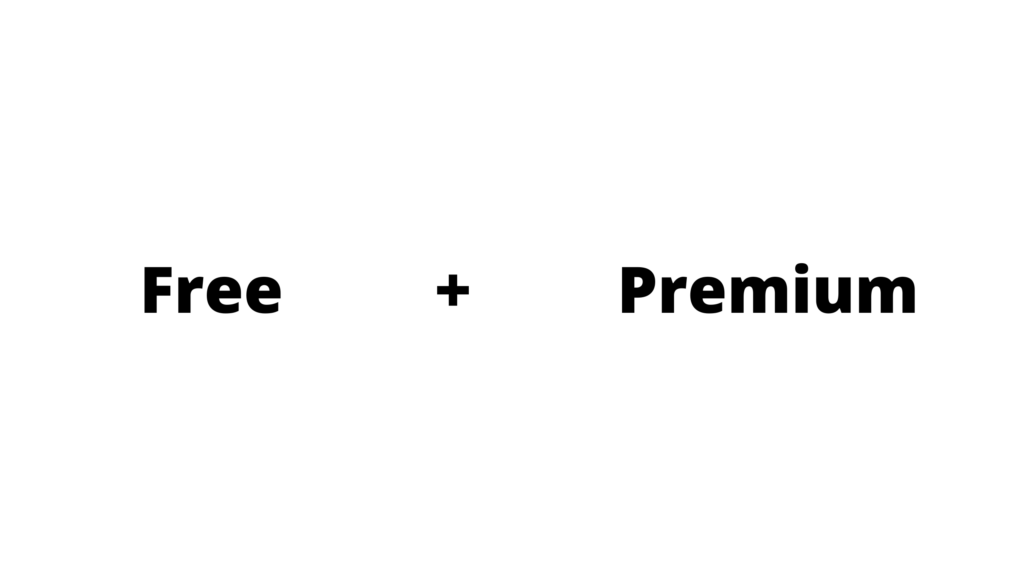
The freemium business model is often common in the technology industry. The business model’s name comes from a combination of two words, ‘free’ and ‘premium’. In this model, a company usually offers its customers two versions of the same product or service.
One version is free and customers can use it without paying for it, while the other version costs money. Usually, the free version of the product has limited or missing features that the full version fulfills.
Companies can use the freemium business model to allow their customers to use their product and test it. They offer the free version with basic features, but ones, which still show off their advantages.
If the customer likes the product, they can pay to buy a full version, which comes with better features and, sometimes, after-sale services or support.
While mostly utilized by modern technology companies, the freemium business model isn’t unique or new. The model has existed since the 1980s, while its name comes from the 2000s.
However, due to the additional limitations, companies can put on their products using technology, it is more successful in the technology industry than in any other field.
How does the Freemium business model work?
The best way to describe how the freemium business model works is by explaining how it works for a software company. A company makes software that it wants to sell to its customers.
However, to attract customers and help them understand how their software works, they allow their customers to use their software for free first.
There are two ways in which these companies offer freemium products to customers. Firstly, they may allow customers a demo version of the product, which comes with limited features but can work independently.
On the other hand, some companies may offer their products on a trial basis. With that, customers can use all the product’s features for a limited time, for example, one month.
Once the customers use the product and like it, they can pay for its full version to make full use of it. They can use the limited version if they don’t like it.
In case the software comes with a trial version, the software will stop working after a limited amount of time.
While the demo version of products may come with limited features, some companies still earn from that. However, the earning isn’t through the customer paying for the product.
Companies introduce advertisements in their products that earn them money, even if their customers don’t buy the full version. However, companies remove these advertisements on the full version to make the deal lucrative for customers.
What are the advantages and disadvantages of the Freemium business model?
The freemium business model has some advantages and disadvantages for companies and, sometimes, the customers. Some of these include the following.
Advantages
The freemium business model allows companies to get good exposure by making a free product with marketable features. A company that uses this model can market its products to more customers than if they weren’t free.
Similarly, some customers will eventually pay for the product, thus, increasing revenues.
Freemium products also let customers get a good look at a product before buying it. It not only allows the customers to benefit but also helps companies to develop a loyal following.
Similarly, companies can collect user data through their products as a quick way to survey their users before letting them use the product.
Lastly, companies that use the freemium business model are more popular with customers than those that don’t. It is because customers come across their free versions of software, which may solve all their needs.
Therefore, their customers tend to be higher in number, increasing their popularity.
Disadvantages
Freemium products, while beneficial to customers, can also be harmful. Most of the time, freemium products come with advertisements or tracking, which collect their data without their consent.
Companies recover their money through even the products that are free. Therefore, customers always end up paying through something, be it money or privacy.
Similarly, if a company uses the freemium model, it can, potentially, never earn money. If customers don’t like the experience or get all the features they need in the freemium product, they are not likely to pay the company.
Similarly, freemium models increase customers’ expectations, which if not met, can cause problems.
Examples
Most online cloud storage software makes a good example of the freemium business model. Software such as OneDrive, Google Drive, Dropbox, etc. all has a limited capacity, which users can increase by paying for more.
Similarly, some other software, such as MailChimp, Spotify, SurveyMonkey, Skype, etc. are examples of this model.
Conclusion
Freemium business model is for companies that offer a free version of their product, albeit limited. They earn by allowing customers to use their product for free, with basic features, and asking them to pay for a premium version.